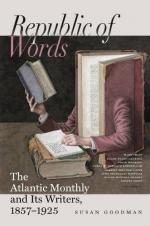religion, an alien blood, and long arrears of vengeance.
When that contest was waged upon the sea or on a foreign
soil, it was at least mitigated by the ordinary rules
of warfare. But on Spanish soil it knew no restraint,
no limitation but the complete effacement of the Moorish
population. The story of the Morisco Rebellion,
which we remember to have first read with absorbed
attention in Dunham’s meagre sketch, is here
related with a fulness of detail that exhausts the
subject, and leaves the mind informed both of causes
and results. Yet the march of the narrative is
rapid and unchecked, from the first outbreak of the
revolt, when Aben-Farax, with a handful of followers,
facing the darkness of night and the blinding snow,
penetrated into the streets of Granada, shouting the
cry so long unheard in air that had once been so familiar
with its sound, “There is no God but Allah, and
Mahomet is the prophet of God!”—through
all the strange and terrible vicissitudes of the deadly
struggle that ensued, the frightful massacres, the
wild
guerrilla battles, the fiery onslaughts
of the Spanish chivalry, the stealthy surprises of
the Moorish mountaineers,—down to the complete
suppression of the insurrection, the removal of the
defeated race, the overthrow and death of Aben-Aboo,
“the little king of the Alpujarras,” and
the ghastly triumph in which his dead body, clothed
in the robes of royalty and supported upright on a
horse, was led into the capital where his ancestors
had once reigned in peaceful splendor, after which
the head was cut off and set up in a cage above the
wall, “the face turned towards his native hills,
which he had loved so well.”
On such a theme, and in such localities, Mr. Prescott
is more at home than any other writer, American or
European. His imagination, kindled by long familiar
associations, burns with a steady flame. The
characters are portrayed with a free and vigorous pencil,
the contrast between the Orientalism of the Spanish
Arab and the sterner features of the Spanish Goth
being always strongly marked. The scenery, painted
with as much fidelity as truth, is sometimes brought
before the eye by minute description, and sometimes,
with still happier effect, by incidental touches,—an
epithet or a simile, as appropriate as it is suggestive.
As we follow the route of Mundejar’s army, the
“frosty peaks” of the Sierra Nevada are
seen “glistening in the sun like palisades of
silver”; while terraces, scooped out along the
rocky mountain-side, are covered with “bright
patches of variegated culture, that hang like a garland
round the gaunt Sierra.” At their removal
from Granada, the remnant of what had once been a
race of conquerors bid a last farewell to their ancient
homes just as “the morning light has broken
on the red towers of the Alhambra”; and
scattered over the country in small and isolated masses,
the presence of the exiles is “sure to be revealed
by the minute and elaborate culture of the soil,—as
the secret course of the mountain-stream is betrayed
by the brighter green of the meadow.”




